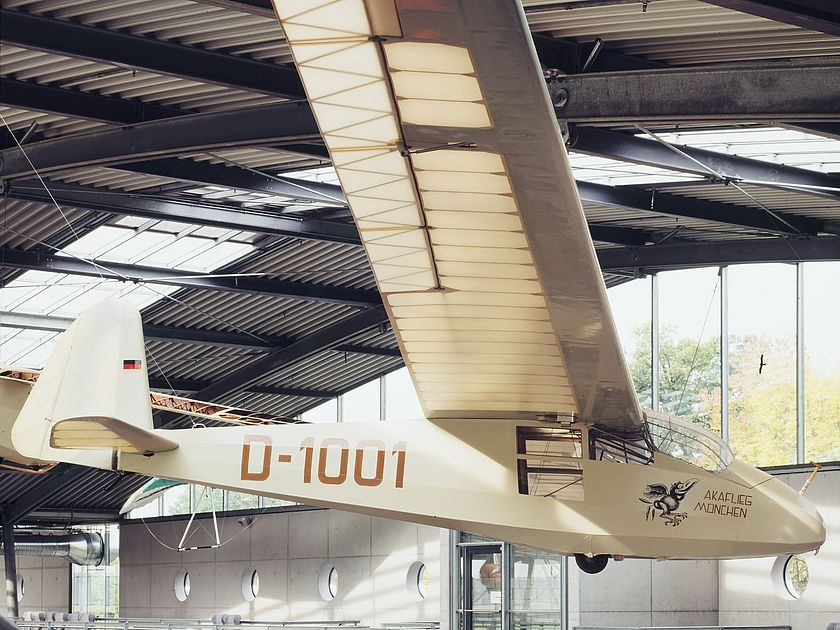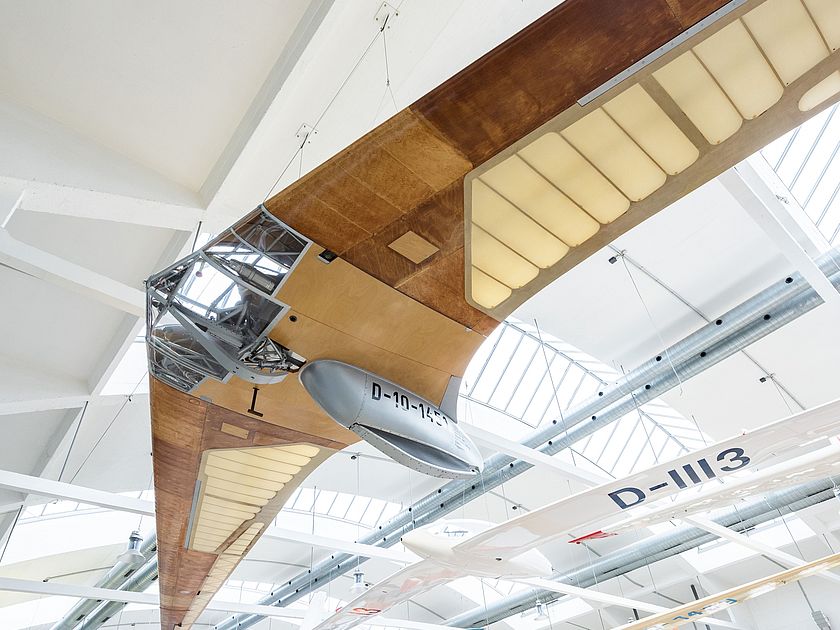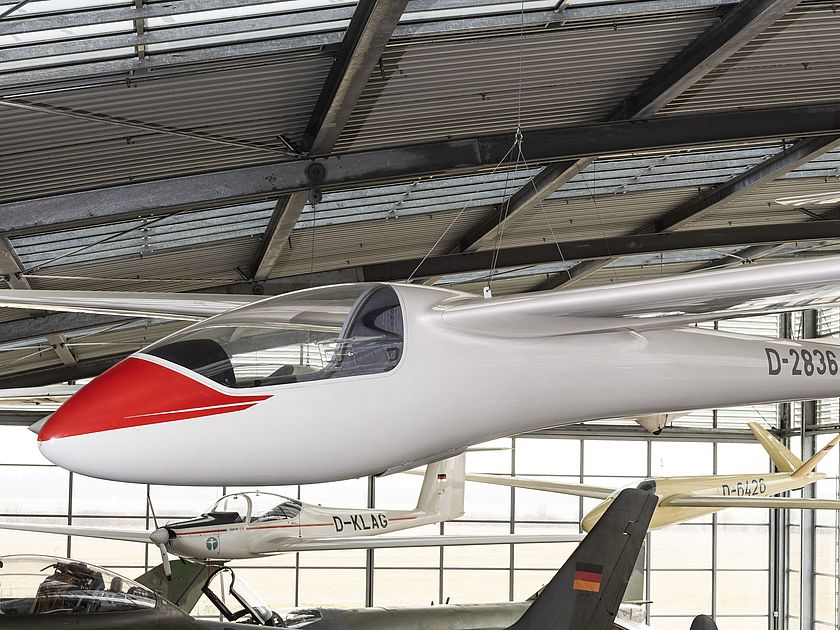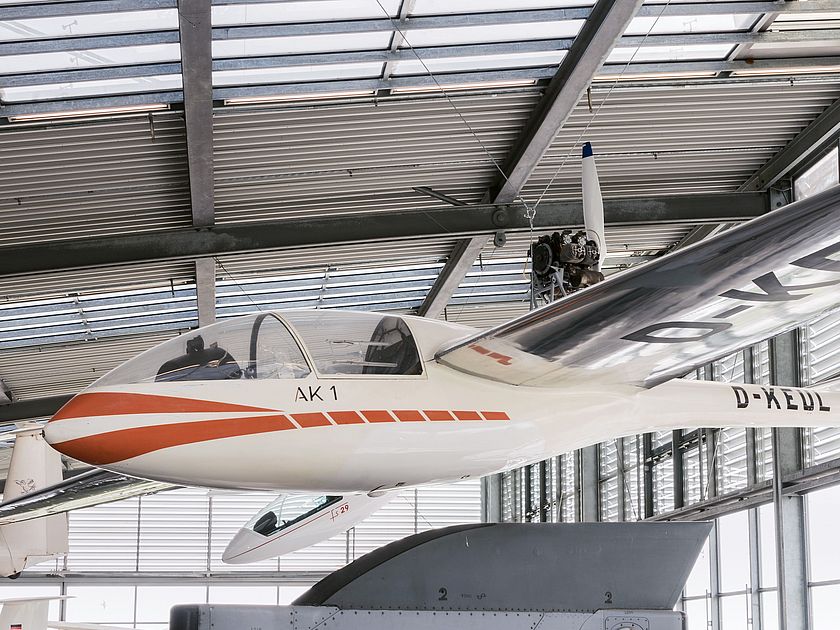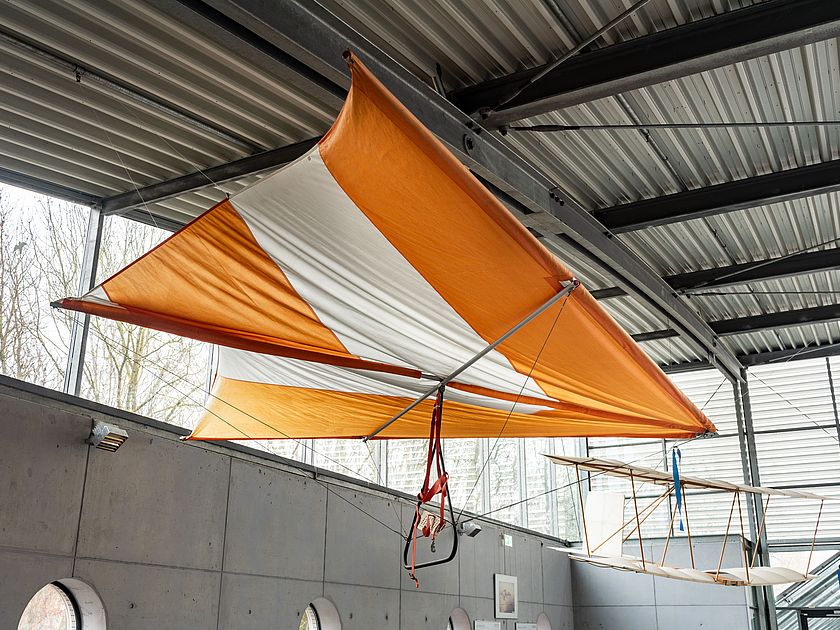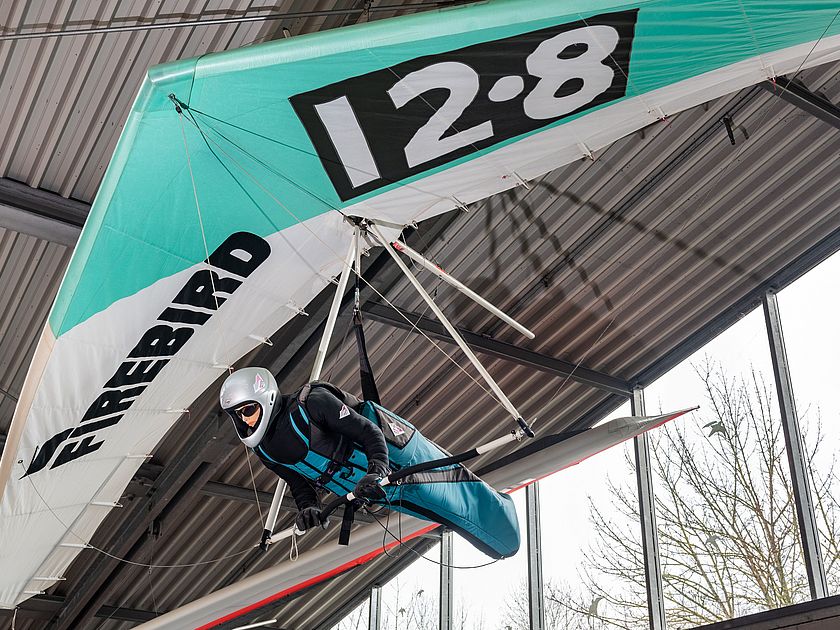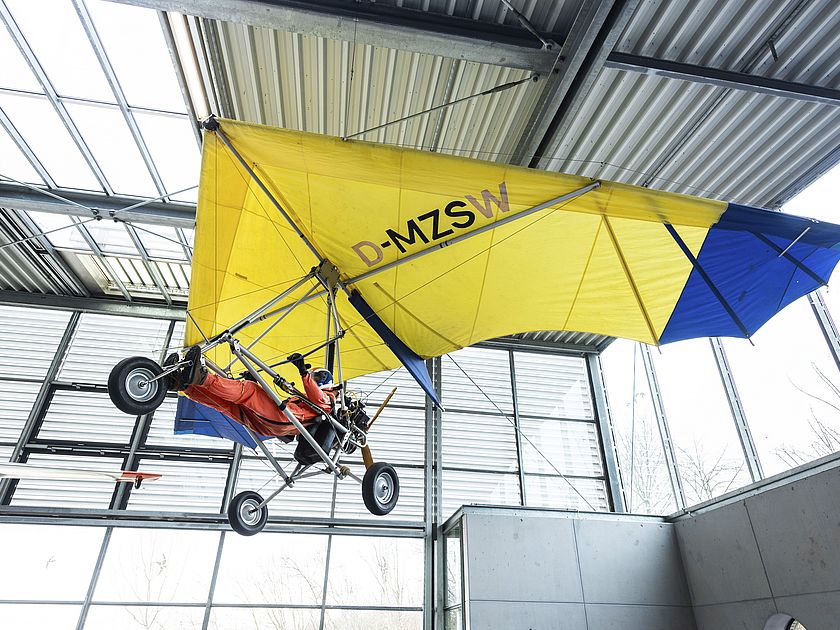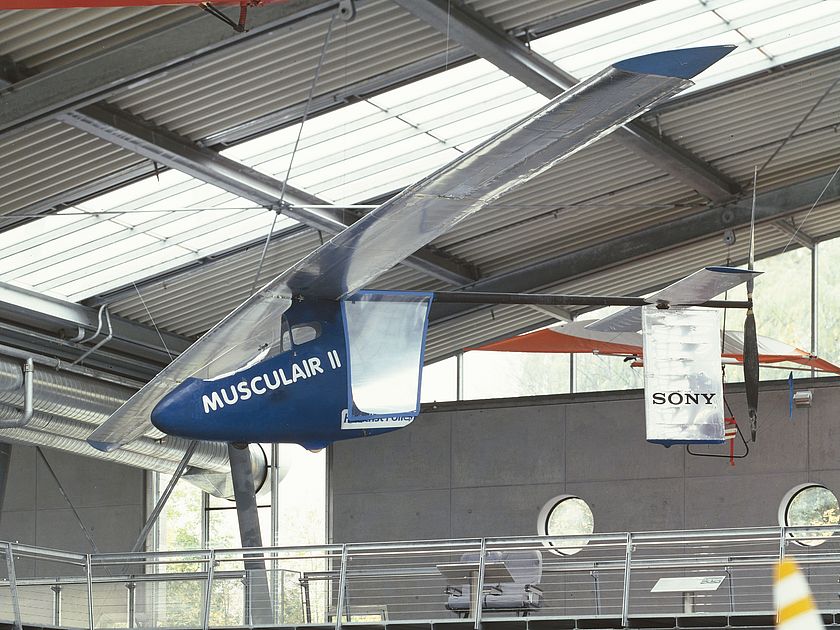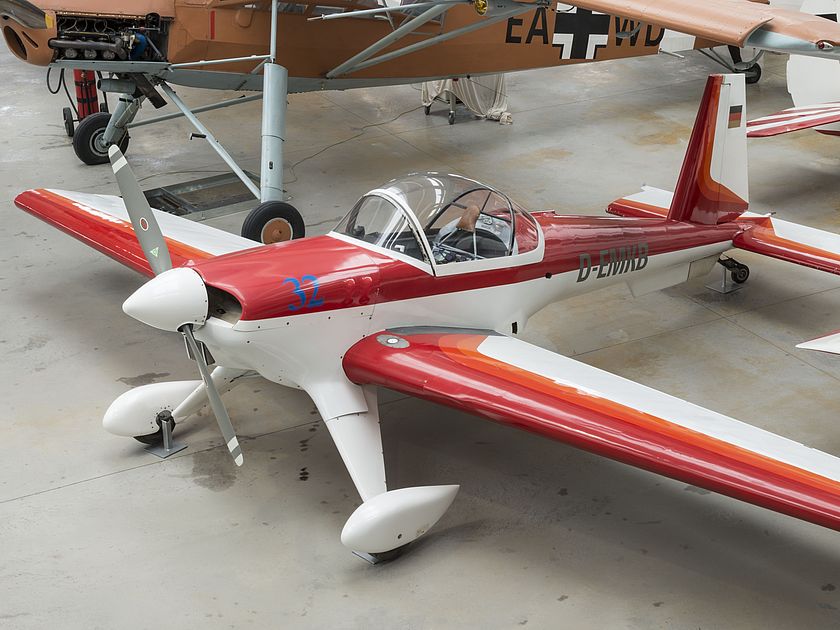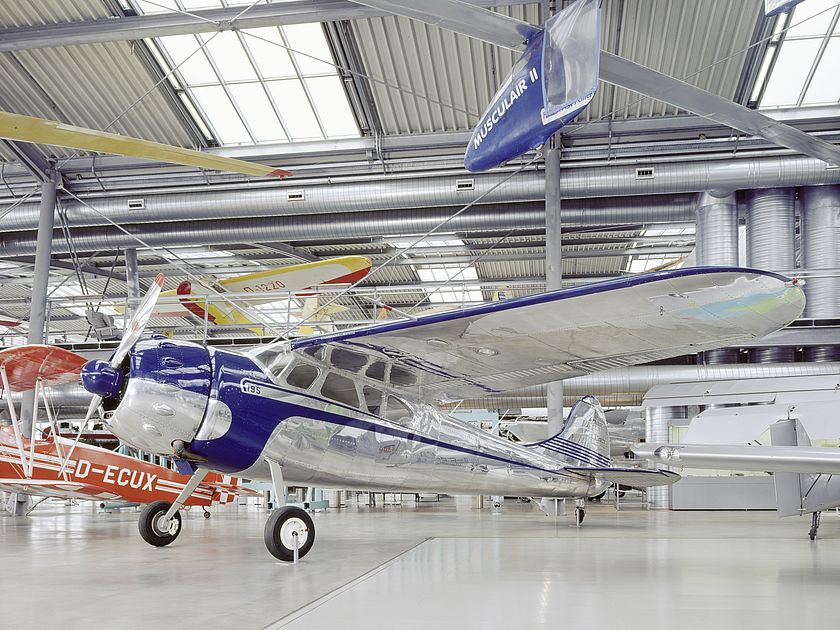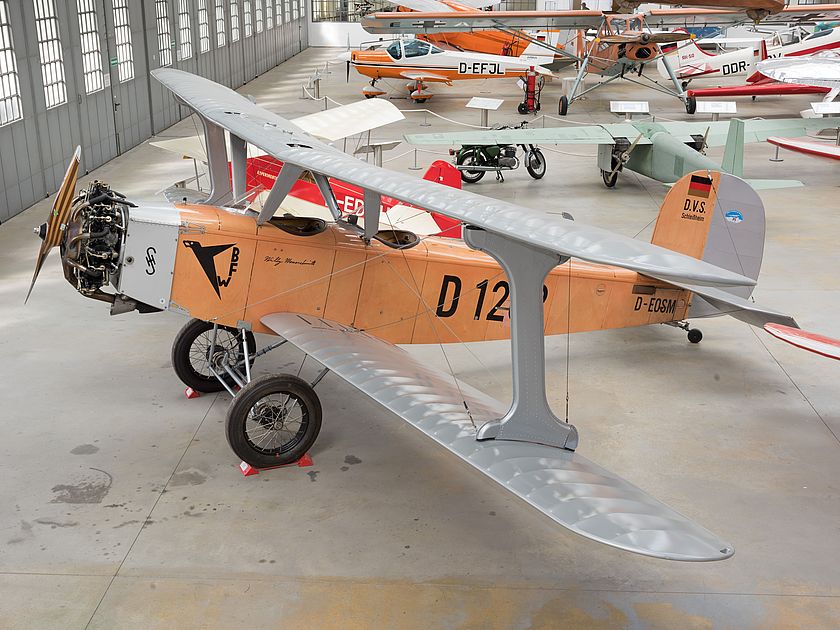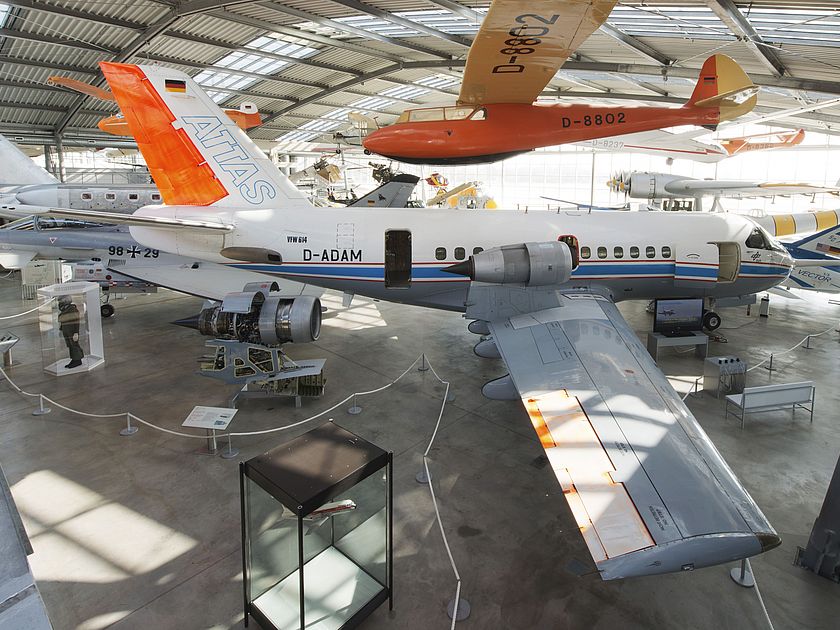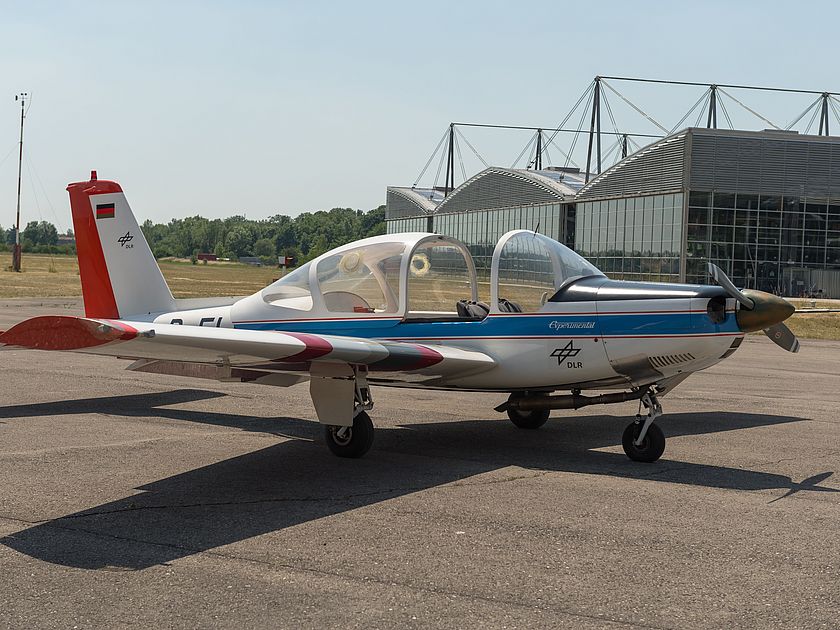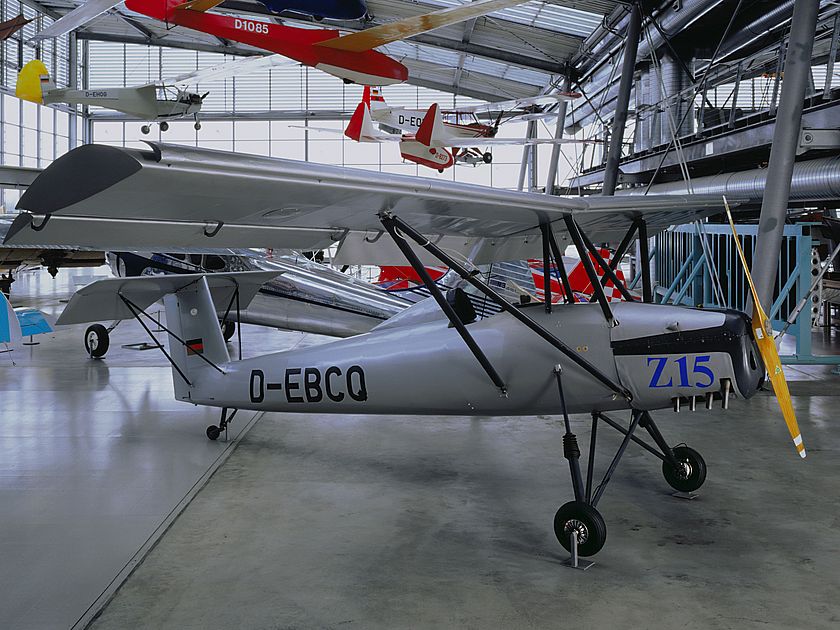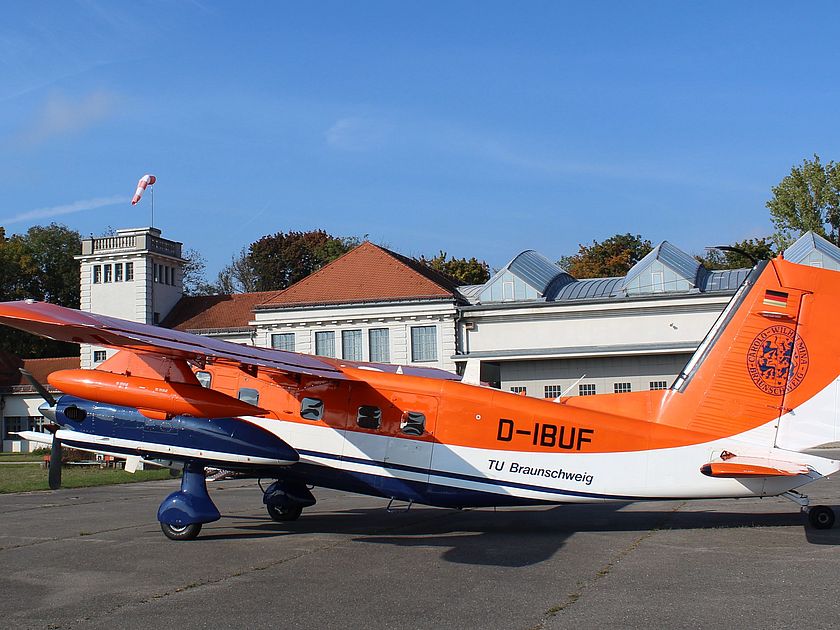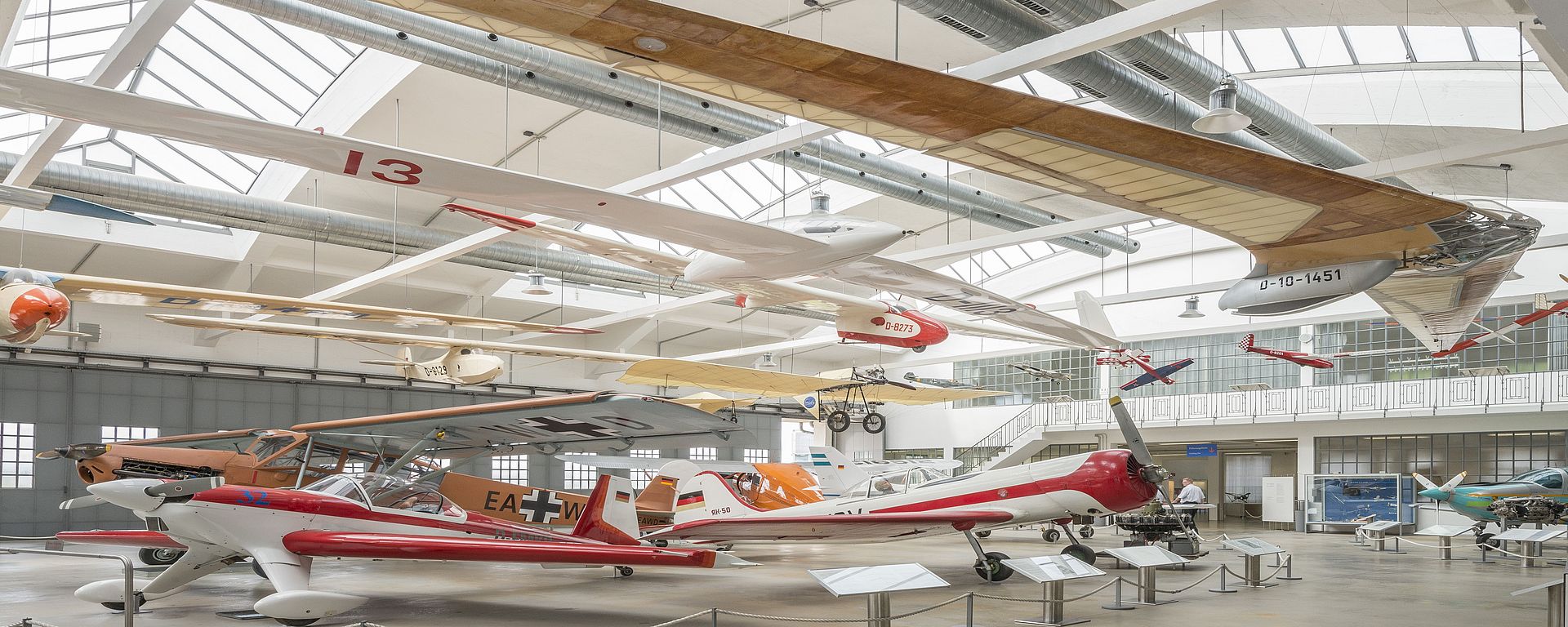
Photo: Deutsches Museum
Air Sports and Civil Aviation
The peaceful aspects of aviation are represented by the numerous aircraft used for sports or business purposes, for travel and flight training or simply flying for pleasure.
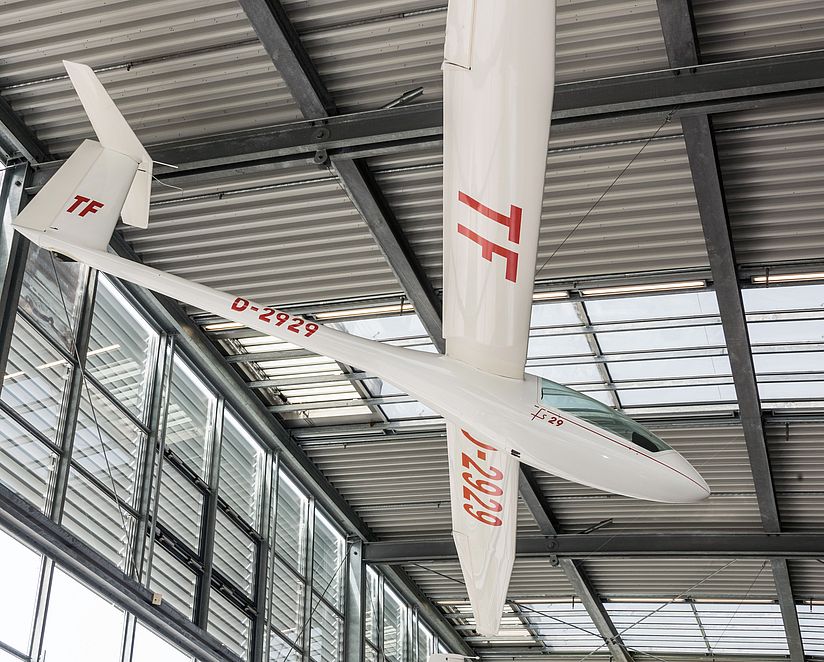
Photo: Deutsches Museum
Gliders and Motor Gliders
Gliding became established as a fully-fledged sporting alternative to powered flight as early as the 1920s. From 1920, the rapidly growing “glider community” met regularly for competitions on the Wasserkuppe mountain in the Rhön region of Germany. The transition from gliding flight to actual soaring flight was brought about in 1922 by Arthur Martens, who was the first to succeed in staying aloft and “soaring” for a longer period of time in ridge lift. The first thunderstorm flights and the discovery of thermal updrafts as a further source of power made gliding independent of the slope in 1928. Winch launching and aerotow replaced bungee launching. In the 1950s, a new phase of development began whith the introduction of plastic construction methods, in conjunction with modern laminar airfoils. This enabled the creation of streamlined designs, and consequently led to a significant increase in performance.
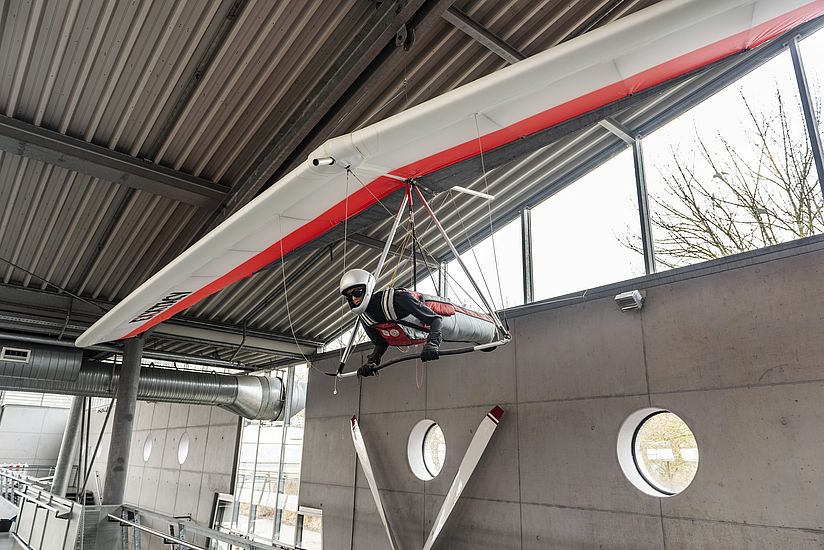
Photo: Deutsches Museum
Hang-gliders and Ultralight Aircraft
The 1970s saw a return to simpler flying machines, namely the hang-glider, within aviation sports. These gliders initially had rigid wings, but then evolved into designs equipped with wings that were flexible. Hang-gliders are so light that the pilots can carry them themselves. Take-off is usually on a slope and facing into the wind. After take-off, the pilot hangs under the glider in a harness, and in modern designs, they lie in a horizontal position to reduce drag. Pilots control the glider by shifting their body weight.
Soon, people began to fit motors to the hang-gliders, leading to the development of ultralight aircraft. These give people the opportunity to fly at low expense and with minimal organisational effort.
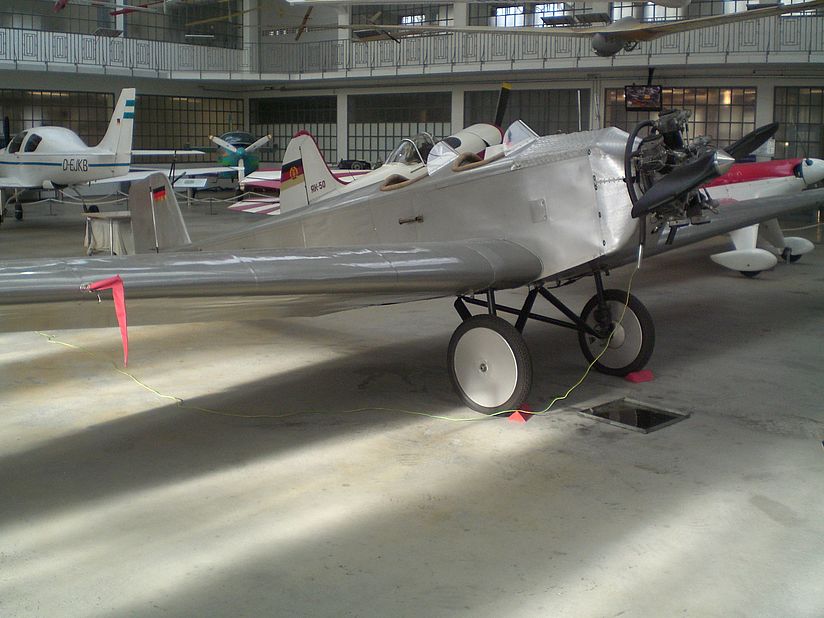
Photo: Deutsches Museum
Sports and Passenger Aircraft
Sports aircraft are mainly aerobatic aircraft such as the Yak-50 and the Hirth Acrostar. Passenger aircraft are used for pleasure flying or for business trips. In addition, there are a large number of training aircraft designed with the specific requirements of flight training in mind.
Research Aircraft
The twin-engine VFW-614 ATTAS flew for 27 years at the German Aerospace Center (DLR) as a “flying laboratory”. This aircraft made it possible, for example, to model the flight characteristics of various aircraft designs. The LFU 205, which was also used at the DLR as a development testbed aircraft for the study of laminar aerofoil profiles.

